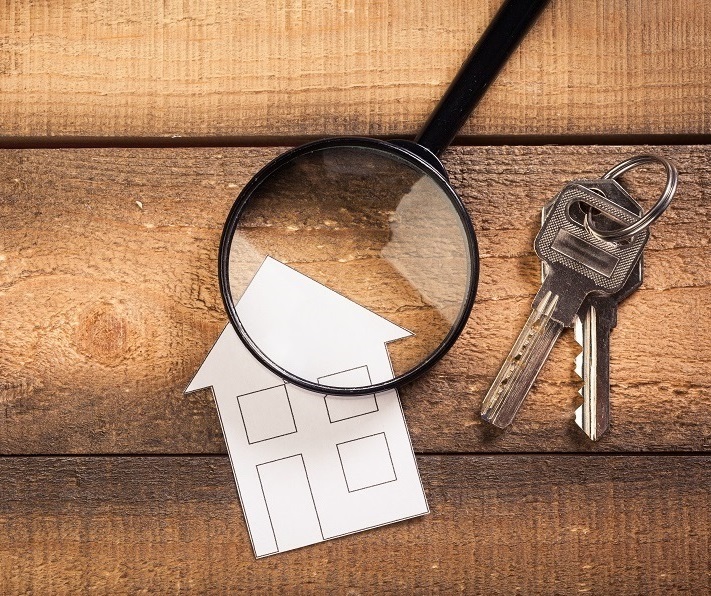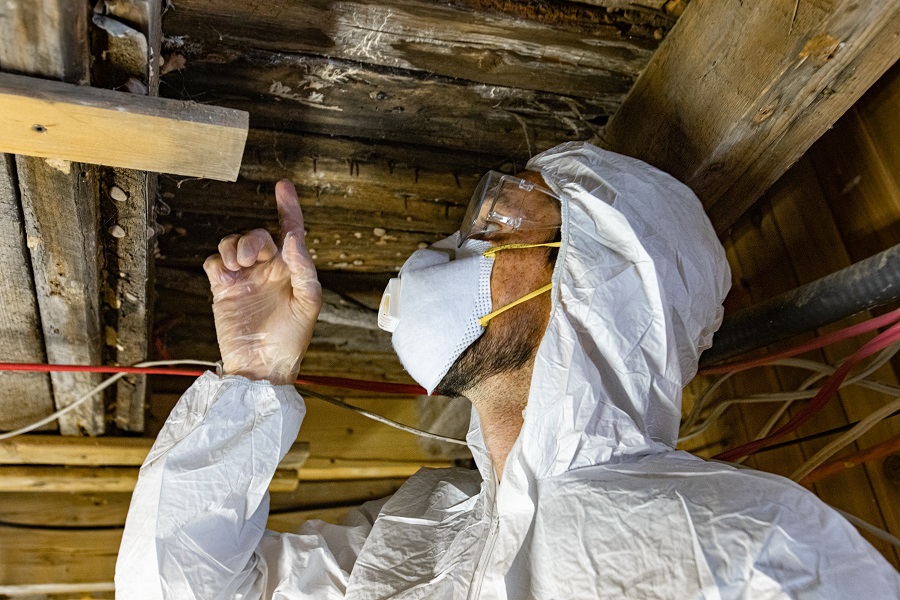What is dry rot?
Dry rot is a common term for various kinds of wood-decay fungus. The wood is broken down by fungi, as the Mycelium decomposes the wood, resulting in fine dust particles that are made of sawdust and wood chips, forming colonized areas that are referred to as fungal blooms. Dry rot spores need a place to land and start a colony before expanding from the underneath wood. A lot of these spores are present in soil and old wood already infected by dry rot.
This means wood can get damp and stay damp for considerable periods of time below 15% relative humidity. Dry rot attacks the structural parts of a property such as floor joists and rafters undetected, unlike wet rot which can only attack damp timber. It often occurs where you’re not looking. It could be under the plaster, under your floorboard, or in your loft. This is why it’s essential to know the signs and symptoms of dry rot and to get it treated quickly.
What is the difference between dry rot and wet rot?

Dry Rot Treatment and Services
What are the causes of dry rot?
Many types of fungi lead to dry rot. The most commonly found in the Beckenham is Serpula Lacrymans. it can spread from your home’s walls to the floors, and even the plaster is not fixed soon enough. This would damage the integrity of your structural wood, and thus the structural integrity of your whole residence. Dry rot hits when you have too much moisture in your timber. The fungus will use the moisture and nutrients to grow and reproduce. The expression “dry rot” is used to contrast between “wet wood” and “dry wood rot.”
Wet wood survives on the dry rot. In order to develop spore-bearing structures, the fungal spores need over 30% dampness to generate hyphae after this, however these hyphae merely need 20% dampness to last. They are the only living organism that can form three-dimensional networks of hyphae, which can lead to mycelia that spread over considerable distances. H2O, Hemicellulose and cellulose can be stripped from the timber by this fungus, leaving behind a fragile structure of the original wood. You will need a specialist survey to distinguish whether your decaying timber is being caused by dry rot or by a different fungus. This is important as the remedies for these damages can vary based on the actual cause.
The dangers of dry rot in Beckenham
Dry Rot Effect on your Property
Dry rot can be highly detrimental to the integrity of your home. As Dry Rot breaks down your properties structural timber, it will eventually cause it to crumble. In serious cases, this can trigger various parts of your house to break apart. Dry rot, however, does not attack your brick or stone; it only travels across it. This is why regular checks are important.
Dry rot is a ravaging condition that affects your home and must be addressed immediately. When you know a dry rot problem is imminent, call in the experts at Dry Rot Experts and Rescue. If you’re worried about dry rot, an inspection from our expert team can help you avoid major problems in the future.
What are the Warning Signs of Dry Rot?
The earlier you discover dry rot, the less time and money you’ll need to spend treating it and initiating remedial works. A full assessment by a professional is recommended if you experience any of the following signs and symptoms.
The beginning of the dry rot cycle
Fungi spores may travel through air via wind in order to infect a new host. The insect cuts small holes into the wood and eats the sap that comes out. The fungus then hyphae will germinate and start to spread through the timber if the wood gives them enough nutrients. As the fungus grows, strands of this tissue called hyphae form spiderweb-looking collections called mycelium. Mycelium can be light grey to pure white. Mycelium is mostly found between property’s bricks, mortar and plaster and can also try and spread into timber greatly.
Your timber is damaged.
You are likely to start noticing rot issues if your timber begins to dry out. Often this can also cause the timber to collapse. You will probably note the dry rot blacken the color of your wood. Cuboidal cracking on walls can be caused by a multitude of dry rot. Cuboidal cracking occurs when the wood breaks into cubes that are about 50 mm in width. At its worst, the fungus rots the timber, causing the white fungal hyphae to grow. Hyphae can look like cobwebs and is a common symptom of dry rot.
Your timber will smell.
If you detect a distinct dour, you should have your timber checked for dry rot. This can happen even if you can’t see the outbreak of dry rot. The smell doesn’t necessarily mean dry rot is present.
Your timber will have fungus bodies on it.
Dry rot is the most noticeable kind of wood rot and one of the final stages of fungal attack. Those cute little mushroom-like fruiting bodies can start joining themselves with your wood. They occur when dry rot can no longer feed on the wood, so the fungus has to churn out spores instead.
Damp Proofing Can Help Prevent
- Rising / Penetrating Damp
- Ingress of Water
- Salt Crystallization
- Plaster Breakdown
- Damp Staining
- Wet Rot / Dry Rot
Contact Southern Damp Proofing Now to Speak With an Expert
Dry Rot Treatment in Beckenham
A Dry Rot infestation can only occur when moisture levels are above 20%. The first defense to eliminate the presence of fungus lies on controlling the levels of moisture in your living space or property. Then the moisture levels will be under your control. To treat dry rot, we recommend you commission a professional.

Your timber may require Boron roads injection from a professional. It’s a well known fact that Boron is a lethal material, that’s why we always make sure all of our damp proofing experts wear the right safety clothing. Due to their specialist experience and thorough inspection, our damp experts will be able to identify and address any damage that dry rot may have caused in your home. Dry rots can be a severe issue and need to be treated right away. If dry rot is not treated right away, it will spread throughout your property and cause real damage. Our Southern Damp Proofing team will work with you to implement a suitable treatment that addresses your problem effectively and efficiently. Please don’t waste time. If you believe you have a problem with dry rot, call 020 7971 1329 for a free survey, and successful care today.
How can you prevent dry rot damage in Beckenham?
The first treatment phase is the removal of dry rot. Most typically, a rot invasion occurs near an area that has a high amount of moisture and where the wood has enough space to dry and shrink. Any activities that prohibit them from evolving are present here: It is your responsibility to ensure that there are no leaks in your house. Facilitate sufficient ventilation.
Ventilate the attic correctly and wrap it. Properly ventilate crawl spaces. Stop dirt and moisture from getting into your basement or crawlspace. Examine all areas of the roof and wall surrounding the chimney from top to bottom, ensuring that water is being directed away from the chimney properly. Keep drains and downspouts clear. Using a wet system? Check for plumbing and heating leaks in your home. The best way to reduce the chance of dry rot is to minimize moisture levels, considering the moist conditions needed for dry rot fungus in feeding and germinating. For instance, if you plug the leak, you prevent water from flowing into the pipe and causing future damage.
Speak to a Dry Rot specialist in Beckenham
We are a team of highly trained experts who will fix your dampness and help you to avoid future damage. We’ll do a full steam survey of the property and give you a free estimation before we start any work.

Dry rot is caused by moisture getting into the wood, it is important to contact us right away because dry rot can spread quickly. Southern Damp Proofing will be able to help you no matter what the nature of your damp issue is, email or call us on 020 7971 1329
FAQ’s
Where can dry rot grow?
How can I confirm that I have dry rot?
Is dry rot serious?
If dry rot is left unchecked what will happen?
Will dry rot stretch?
How wide is Dry Rot able to spread?
How do I discover how far Dry Rot has spread?
Can my dry rot problem be treated effectively by you?
Should I restore or replace dry rot?
For Top Quality Damp Surveys & Treatments
Other Areas We Cover
- Dry Rot Treatment in Acton, London
- Dry Rot Treatment in Barking, London
- Dry Rot Treatment in Barnes, London
- Dry Rot Treatment in Barnet, London
- Dry Rot Treatment in Battersea, London
- Dry Rot Treatment in Bermondsey, London
- Dry Rot Treatment in Bethnal-Green, London
- Dry Rot Treatment in Bexley, London
- Dry Rot Treatment in Bexleyheath, London
- Dry Rot Treatment in Bow, London